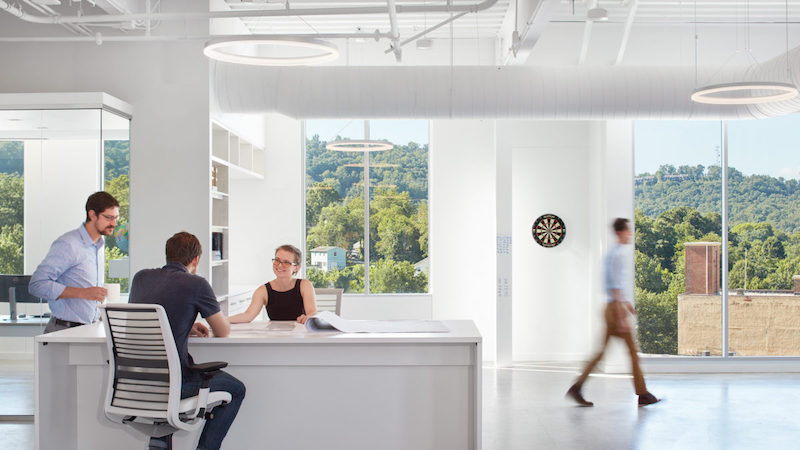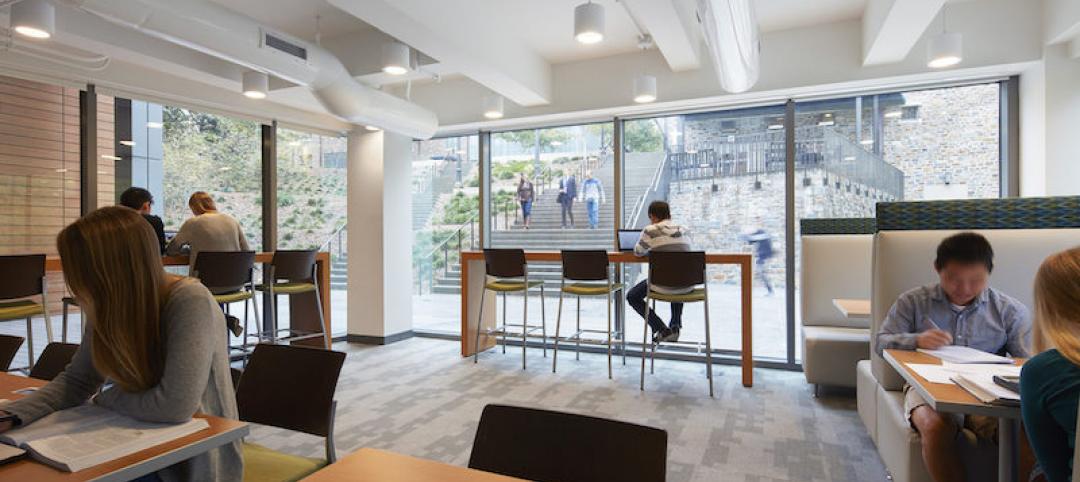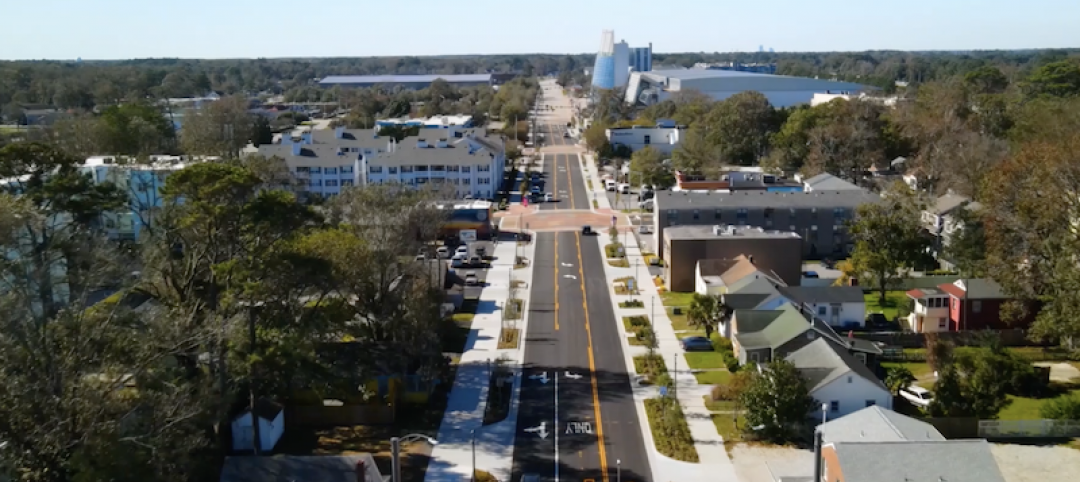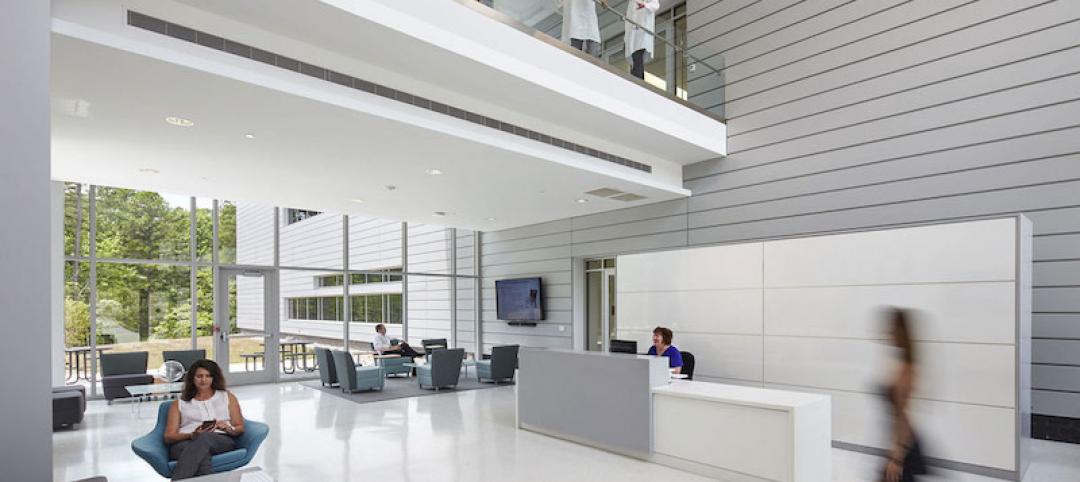The evolution of technology and the Internet of Things, in particular, is transforming how and where we work, the ways in which we collaborate, and our daily experiences with colleagues. The entrance of younger generations into the workforce is further impacting the way corporations organize themselves, communicate, and conduct business. In terms of workplace design, there is a responsibility to respond to these evolving needs with spaces that empower people and businesses.
Impact of Changing Corporate Structures on Workplace Design
This trend can’t be overstated – changing corporate structures (due to generational and social norms) and rapid technological advances will continue to be the biggest drivers of change in workplace design. With the arrival of Millennials and now Generation Z into the workplace, corporate structures are changing and becoming less hierarchical. These generations want – and expect – to be part of the conversation around key initiatives, policies, and objectives. For years, businesses have talked about breaking down silos, and this is a time where that is really taking place.
The impact on design is that open workspaces, varied collaboration and meeting spaces, innovation labs, and the accommodation of remote work are only going to become more prevalent. Creating a seamless experience for employees who flex between remote and office-based work will be critical – meaning available workspace or offices and smooth wireless connectivity must be givens. Where workplace design and technology meet lies a key opportunity to facilitate how people want to work, taking design from business-driven to people-driven for the best results. Equally important is the creation of a sense of belonging and community. People want more human experiences, and we need to create places and opportunities for that.
Coworking & Growing Demand for Flexibility
Coworking, the liquid workforce, remote work, and the growth of side gigs all highlight how the workplace is adapting to employees’ demand for flexibility. Coworking, for example, isn’t going anywhere – but it is evolving from shared working environments to dynamic, integrated spaces that blend housing, the workplace, innovation labs, maker spaces, and amenities. Station F in Paris, designed by Wilmotte & Associés, stands out as an example of this approach and calls itself “a whole entrepreneurial ecosystem under one roof.”
These nontraditional spaces foster innovation while establishing a new type of community by merging the spheres of “work” and “life.” While work-life balance is still a dominant phrase in recruiting conversations, this evolution of coworking spaces speaks to the shift that younger generations of workers are making from a “balance” to an “integration.” Younger employees, essentially digital natives, have a different comfort level and expectation for the flexibility that technology introduces in their lives – envisioning an experience where work and life are happening together.
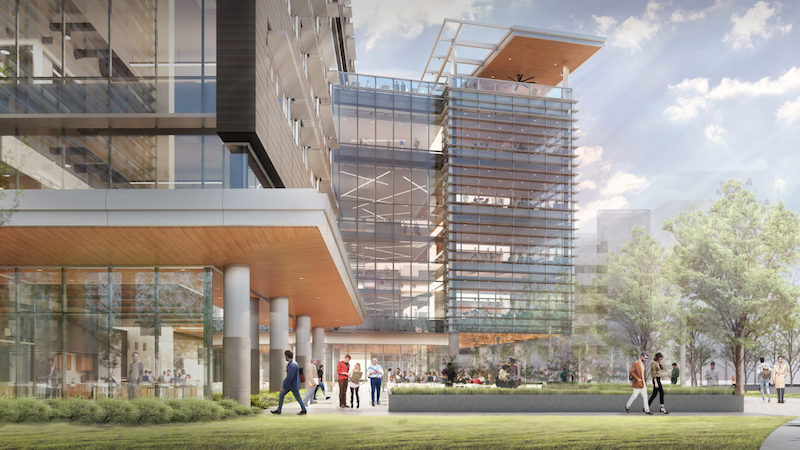 At Ferguson’s HQ3, high degrees of transparency between the ground floor and the public plaza promote a strong sense of connection to the surrounding community. Featuring a café and varied meeting and social spaces, the ground floor is also intended to host both community and company events.
At Ferguson’s HQ3, high degrees of transparency between the ground floor and the public plaza promote a strong sense of connection to the surrounding community. Featuring a café and varied meeting and social spaces, the ground floor is also intended to host both community and company events.
Amenities, Amenities, Amenities
Employee expectations for the workplace are now far beyond a desk, chair, phone, and internet connection. With the bulk of their time spent at work, employees want that time to be as enjoyable and meaningful as possible – and for their workplace to accommodate the realities of their life outside of work. While game spaces introduce a sense of fun, the most impactful amenity spaces are often those that simply enable employees to function comfortably and respond to their work-life priorities.
Examples of these types of spaces include a mothers’ room, prayer rooms, nap pods, and wellness-driven amenities such as healthy food and beverage options. Biophilia, the introduction of outdoor elements to the workplace, is a growing and critical trend as it pertains to employee wellbeing. As cited in our recent K-12 design blog, urbanization is growing rapidly and it correlates with increasing diagnoses of nature deficit disorder (a lack of direct interaction with nature on a regular basis). To combat this, organizations can work with designers to integrate varying degrees of outdoor elements into their spaces. The use of extensive glazing, for example, such as in Asheville’s City Centre office building, provides abundant natural light into the workplace and offers views to the natural world.
Social amenities are also growing in popularity, with kitchen and break areas now featuring “fun” elements like wine bars and space for kegs. This idea capitalizes on the appeal of gathering around food and drink to bring employees together more frequently in a relaxed environment. The integration of social amenities further aligns with employees’ desire for greater connectivity with the surrounding community, providing versatile space for hosting community and business events.
Environmental Branding
Alongside amenities, aesthetics feature prominently in the development of a workplace that appeals to current and potential employees. In addition to ensuring daylight and attractive finishes, designs that integrate environmental branding successfully promote a sense of shared purpose, identity, and pride among employees. Equally significant is the role of the workplace as a client-facing sales tool, conveying an organization’s values, strengths, and differentiators.
Communicating an organization’s brand in the workplace goes far beyond a wall graphic of a logo and values. Each element of the space design presents an opportunity to convey a brand experience, integrating a branded color palette, style, visuals, signage and wayfinding, and messaging. Even the types of spaces and their organization say something about how a business identifies itself and functions. The goal in the design process is to bring together graphic design, interior design, and architecture to develop a plan that cohesively reflects the organization’s identity throughout the workplace.
Community Connections
Companies are increasingly prioritizing the inclusion of dual purpose spaces that can serve their employees and the public by hosting community or business events. These spaces enhance employees’ sense of community with each other and with the greater community around their office, improving engagement and job satisfaction – and ultimately, productivity. Location can play a role in community connections, as well. Office site selection in downtown, urban areas where employees can walk to restaurants, entertainment, and green space naturally promotes their sense of connection with the community.
This effort aligns with the growing emphasis job seekers are placing on corporate social responsibility. People want to work for organizations that are active in their communities and have a social identity or mission alongside business objectives. Creating space to host community events can serve as a highly visible component of a social responsibility strategy. As an amenity, these types of spaces also serve to reinforce office camaraderie.
Above all, the driving force behind workplace design is how people prefer to work and what spaces empower their productivity. I believe opportunities for innovation in our practice will be closely connected to research aimed at more thoroughly understanding these concepts – how do people use the spaces we provide, how is technology impacting where work occurs, and how do we effectively meet the varied needs of a diverse workforce.
More from Author
Clark Nexsen | Sep 30, 2024
The importance of selecting healthy materials for K-12 projects
Clark Nexsen interior designers Anna Claire Beethoven and Brittney Just, CID, IIDA, LEED Green Associate, share why it is imperative to specify healthy building materials in K-12 schools.
Clark Nexsen | Aug 1, 2024
How current and future trends are shaping the libraries of tomorrow
Over the last few years, public libraries have transitioned from being buildings that only store and lend books to being fully featured community centers.
Clark Nexsen | Apr 25, 2024
How pools can positively affect communities
Clark Nexsen senior architects Jennifer Heintz and Dorothea Schulz discuss how pools can create jobs, break down barriers, and create opportunities within communities.
Clark Nexsen | Oct 2, 2023
4 design strategies for successful K-12 magnet schools
Clark Nexsen's Donna Francis, AIA, Principal, and Becky Brady, AIA, share four reasons why diverse K-12 magnet schools require diverse design.
Clark Nexsen | May 17, 2023
Designing K-12 schools for students and safety
While bullying, mental health, and other acts of violence are all too common in schools today, designers have shown that smart and subtle preventive steps can make a big difference. Clark Nexsen’s Becky Brady shares how prevention and taking action at the design level can create safe and engaging learning environments.
Clark Nexsen | Jul 1, 2022
How to apply WELL for better design outcomes
The International WELL Building Institute (IWBI) cites attracting top talent, increasing productivity, and improving environmental, social or governance (ESG) performance as key outcomes of leveraging tools like their WELL Building Standard to develop healthier environments.
Clark Nexsen | Jun 3, 2021
What's next for workplace design?
Balancing personal space and the need for collaboration.
Clark Nexsen | Apr 1, 2021
The changing face of freshman and sophomore student housing
As part of a surge in new housing projects for freshman and sophomores, we are seeing increasing demand for double occupancy rooms and suite-style arrangements in both new construction and renovation projects.
Clark Nexsen | Feb 17, 2021
Best practices for streetscape design that cultivates community
Well-designed streetscapes provide a wealth of benefits for their respective communities.
Clark Nexsen | Oct 20, 2020
Best practices in S+T office design
Within the constraints of the typical COVID-19 office protocols, lab users face the additional challenge of working with hands-on processes, tight schedules, and shared resources.

